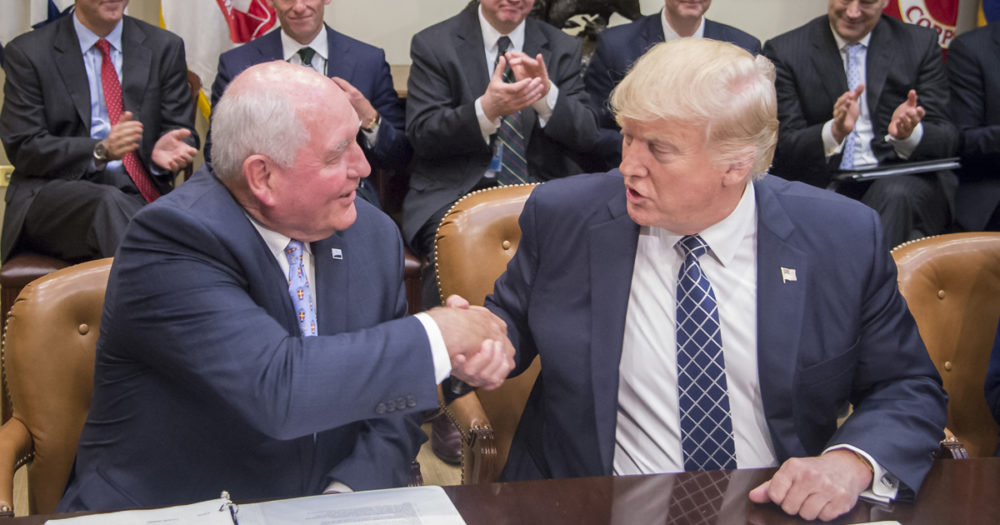As the adage goes, “If at first you don’t succeed, try, try again, but less diplomatically.”
“And be a little sneaky about it.”
And yesterday—after work hours, in peak holiday season—that’s just what the Secretary of Agriculture did. At 5:30 PM, Secretary Sonny Perdue held an off-camera, on-record, over-the-phone briefing about proposed changes to the Supplemental Nutrition Assistance Program (SNAP, formerly food stamps) that would result in major cuts to the program. At 5:03 am this morning the US Department of Agriculture (USDA) posted its new proposed rule.
The proposed changes, which seek stricter enforcement of work requirements for work-ready adults (which the USDA labels “able-bodied adults without dependents,” or ABAWDs), come on the heels of a failed effort to implement other ineffective and punitive work requirements in the farm bill.
Now, the administration is targeting waivers that states can use to suspend these participants’ time limits in the face of high unemployment or low job availability. And, unlike the proposed changes in early farm bill drafts, these regulations come without the guise of investing in paths to employment—because the rulemaking process doesn’t require bipartisanship, compromise, or votes, and Secretary Perdue isn’t even pretending that this is a way to provide the resources people need to find gainful employment. Make no mistake—this program “reform” is a convoluted way to take food off people’s plates.
What, exactly, would the proposed rule do?
Currently, states can request full- or partial-state waivers by providing government data on the status of employment and job availability in a given area. Per the administration’s proposal, the agency would severely restrict states’ ability to receive waivers by engineering numerous changes to program regulations, including:
- Changing or eliminating some of the key metrics and data sources that states can currently use to demonstrate need. For example, states can currently request partial waivers in areas where the average unemployment rate is 20 percent above the national average over 2 years; as reported by Agripulse, this is by far the most common way that counties and reservations qualify for partial waivers. The new rule, as of yet without rationale, requires that states also demonstrate that local unemployment meets a supposedly scientific standard of 7 percent.
- Limiting waiver access in high-need areas that may be located near low-need areas. According to the proposal, the USDA plans to “limit waivers of larger geographical areas that may include sections with sufficient available jobs.” The consequences of this change will likely be borne disproportionately by urban populations and communities of color, as cities often contain pockets of extremely high-poverty and high-need areas in close proximity to affluent areas. Needless to say, geographic proximity to wealth and job opportunities rarely guarantees access.
- Winnowing down the 15 (soon to be 12) percent exemptions afforded to states. States can currently receive exemptions for time limits for up to 15 percent of those work-ready SNAP users who would otherwise face benefit termination. The farm bill reduces this cap to 12 percent, and the proposed rule further weakens the exemptions by banning the carryover of unused exemptions from previous years. While individual exemptions are used far less than full- or partial-state waivers, they could become a more valued resource in the face of extreme cuts to state waiver options.
Many of the specifics of the proposed rule remain unclear—including how the administration would implement the new rules, and exactly how administrative costs would be impacted—but early estimates suggest that more than 750,000 work-ready adults who would lose SNAP benefits over the course of three years. Currently, there are about 3.8 million such adults participating in SNAP, of which about 2.8 million are not working. About 29 states are operating on partial waivers, while only seven states and US territories are operating on full waivers. The USDA has estimated (though, fittingly, this figure itself is suspect) that the cost savings of the proposal would amount to about $15 billion over the course of 10 years.

